-
 Bitcoin
Bitcoin $83,309.8774
-1.88% -
 Ethereum
Ethereum $1,591.3660
-2.42% -
 Tether USDt
Tether USDt $0.9998
-0.01% -
 XRP
XRP $2.0864
-2.28% -
 BNB
BNB $580.9809
-0.68% -
 Solana
Solana $125.6682
-3.01% -
 USDC
USDC $0.9999
0.00% -
 TRON
TRON $0.2516
0.03% -
 Dogecoin
Dogecoin $0.1542
-3.08% -
 Cardano
Cardano $0.6142
-3.69% -
 UNUS SED LEO
UNUS SED LEO $9.3431
-0.92% -
 Chainlink
Chainlink $12.3641
-2.37% -
 Avalanche
Avalanche $18.8865
-5.31% -
 Stellar
Stellar $0.2358
-2.40% -
 Toncoin
Toncoin $2.8805
-0.91% -
 Shiba Inu
Shiba Inu $0.0...01169
-1.89% -
 Sui
Sui $2.1008
-4.00% -
 Hedera
Hedera $0.1574
-5.48% -
 Bitcoin Cash
Bitcoin Cash $318.9019
-1.04% -
 Litecoin
Litecoin $75.9077
-2.52% -
 Polkadot
Polkadot $3.5432
-3.69% -
 Dai
Dai $1.0000
0.00% -
 Bitget Token
Bitget Token $4.2538
-1.47% -
 Hyperliquid
Hyperliquid $15.1227
-5.40% -
 Ethena USDe
Ethena USDe $0.9991
0.00% -
 Pi
Pi $0.6199
-16.77% -
 Monero
Monero $217.3319
2.19% -
 Uniswap
Uniswap $5.2227
-2.58% -
 OKB
OKB $52.2436
1.28% -
 Pepe
Pepe $0.0...07082
-3.62%
What is the difference between PPLNS and PPS?
PPLNS rewards miners based on recent shares, favoring long-term participation, while PPS offers stable earnings per share, ideal for predictable income.
Apr 10, 2025 at 07:35 pm
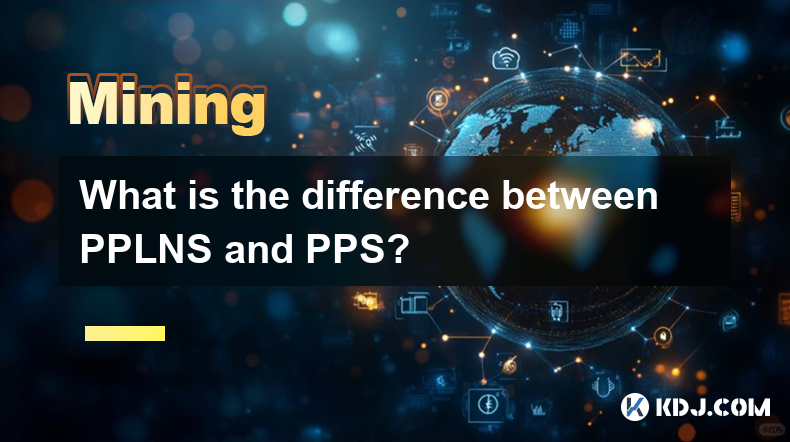
In the world of cryptocurrency mining, two popular payment methods that miners often encounter are PPLNS (Pay Per Last N Shares) and PPS (Pay Per Share). Understanding the differences between these two systems is crucial for miners looking to maximize their earnings and choose the right mining pool. This article will delve into the specifics of each payment method, highlighting their key features, advantages, and potential drawbacks.
What is PPLNS?
PPLNS, or Pay Per Last N Shares, is a payment method where miners are rewarded based on the number of shares they contribute to the pool over a certain period. The "N" in PPLNS refers to the number of shares considered for payment calculation. When a block is found, the pool calculates the total number of shares submitted by all miners within the last N shares and distributes the block reward proportionally.
In PPLNS, miners who have been consistently contributing to the pool are more likely to receive a higher share of the reward. This system encourages long-term participation and loyalty to the pool. However, it also means that miners who join the pool just before a block is found may receive a smaller portion of the reward, as their contribution to the last N shares is minimal.
Advantages of PPLNS
One of the main advantages of PPLNS is that it can lead to higher potential earnings for miners who are consistently active. Since the reward is based on the last N shares, miners who contribute regularly over time are more likely to benefit from larger payouts. This system also helps to reduce the impact of pool hopping, where miners switch between pools to maximize their short-term gains.
Another benefit of PPLNS is that it can be more profitable for the pool operator. Since the pool does not have to pay out a fixed amount per share, the pool's overall earnings can be higher, which can lead to better sustainability and lower fees for miners.
Disadvantages of PPLNS
Despite its advantages, PPLNS also has some drawbacks. One of the main concerns is the variability in earnings. Since the reward is based on the last N shares, miners may experience significant fluctuations in their payouts, especially if they are not consistently active. This can make it challenging to predict and plan for income.
Additionally, PPLNS can be less attractive to new miners or those who cannot commit to long-term mining. Since the reward is heavily influenced by past contributions, new miners may find it difficult to earn a significant portion of the block reward until they have been active for a while.
What is PPS?
PPS, or Pay Per Share, is a payment method where miners are rewarded a fixed amount for each valid share they submit to the pool. Unlike PPLNS, the reward in PPS is not dependent on the total number of shares submitted by all miners but is instead based on a predetermined rate per share.
In PPS, miners receive a steady and predictable income, as the pool pays out a fixed amount for each share regardless of whether a block is found. This system is often favored by miners who value stability and predictability in their earnings.
Advantages of PPS
One of the primary advantages of PPS is the predictability of earnings. Miners can easily calculate their potential income based on the number of shares they submit and the pool's PPS rate. This makes it easier to plan and budget for mining expenses.
Another benefit of PPS is that it is more attractive to new miners and those who cannot commit to long-term mining. Since the reward is not influenced by past contributions, new miners can start earning immediately and at a consistent rate.
Disadvantages of PPS
Despite its advantages, PPS also has some drawbacks. One of the main concerns is that it can be less profitable for the pool operator. Since the pool has to pay out a fixed amount per share, the pool's overall earnings can be lower, which can lead to higher fees for miners.
Additionally, PPS can encourage pool hopping, as miners may switch between pools to take advantage of the fixed payouts. This can lead to instability in the pool's hashrate and make it more challenging for the pool to find blocks consistently.
Comparing PPLNS and PPS
When comparing PPLNS and PPS, it is essential to consider the specific needs and goals of the miner. PPLNS is better suited for miners who are committed to long-term mining and are willing to accept variability in their earnings in exchange for potentially higher rewards. On the other hand, PPS is more suitable for miners who value stability and predictability in their income and are willing to accept potentially lower rewards.
In terms of pool sustainability, PPLNS can be more profitable for the pool operator, as it does not require a fixed payout per share. However, PPS can be more attractive to a broader range of miners, as it offers a more predictable income stream.
Choosing the Right Payment Method
When choosing between PPLNS and PPS, miners should consider several factors, including their mining strategy, financial goals, and the specific characteristics of the pool they are considering. Miners who are focused on maximizing their long-term earnings and are willing to accept variability in their payouts may prefer PPLNS. In contrast, miners who prioritize stability and predictability in their income may find PPS more suitable.
It is also essential to consider the pool's reputation, fees, and overall performance when making a decision. Some pools may offer a hybrid model that combines elements of both PPLNS and PPS, providing miners with more flexibility and options.
Frequently Asked Questions
Q: Can I switch between PPLNS and PPS within the same mining pool?
A: It depends on the specific mining pool. Some pools offer the flexibility to switch between PPLNS and PPS, while others may require miners to choose one method and stick with it. It is essential to check the pool's policies and terms before making a decision.
Q: How does the size of the mining pool affect the choice between PPLNS and PPS?
A: The size of the mining pool can influence the choice between PPLNS and PPS. Larger pools may find it easier to sustain PPS due to their higher hashrate and more consistent block rewards. Smaller pools may prefer PPLNS to encourage long-term participation and reduce the impact of pool hopping.
Q: Are there any other payment methods besides PPLNS and PPS?
A: Yes, there are other payment methods used in cryptocurrency mining, such as PPS+ (Pay Per Share Plus), DGM (Double Geometric Method), and SMPPS (Shared Maximum Pay Per Share). Each method has its own unique features and may be more suitable for certain types of miners and pools.
Q: How do transaction fees affect the payouts in PPLNS and PPS?
A: Transaction fees can impact the payouts in both PPLNS and PPS. In PPLNS, transaction fees are typically distributed proportionally based on the last N shares. In PPS, transaction fees may be included in the fixed rate per share or distributed separately. It is important to understand how a pool handles transaction fees when choosing a payment method.
Disclaimer:info@kdj.com
The information provided is not trading advice. kdj.com does not assume any responsibility for any investments made based on the information provided in this article. Cryptocurrencies are highly volatile and it is highly recommended that you invest with caution after thorough research!
If you believe that the content used on this website infringes your copyright, please contact us immediately (info@kdj.com) and we will delete it promptly.
- Movement Labs and the Movement Network Foundation have launched an independent investigation into recent market-making irregularities related to the MOVE token.
- 2025-04-16 09:15:12
- Shiba Inu (SHIB) burn rate saw an over 2000% hike, leading to the removal of 20.83 million tokens from circulation.
- 2025-04-16 09:15:12
- Securitize Acquires MG Stover's Fund Administration Business to Become the Largest Digital Asset Fund Administrator
- 2025-04-16 09:10:12
- Trump administration plans to present Congress with cuts to most funding for public media
- 2025-04-16 09:10:12
- XRP (XRP) Displays Promising Growth Potential as It Currently Trades Above $2.00 and the 21-week EMA
- 2025-04-16 09:05:13
- BYDFi Lists $KERNEL, the Governance Token of KernelDAO, with Spot Trading Now Live
- 2025-04-16 09:05:13
Related knowledge
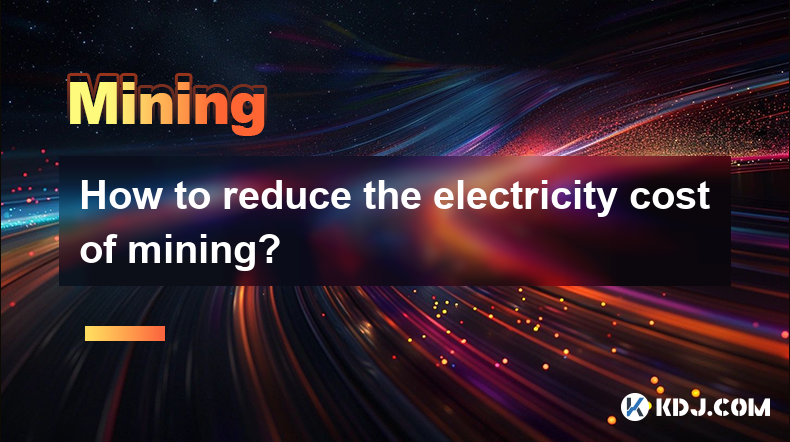
How to reduce the electricity cost of mining?
Apr 16,2025 at 08:42am
Mining cryptocurrencies, particularly Bitcoin, is an energy-intensive process that can lead to significant electricity costs. However, there are several strategies that miners can employ to reduce these expenses and make their operations more cost-effective. In this article, we will explore various methods to minimize the electricity cost of mining. Cho...
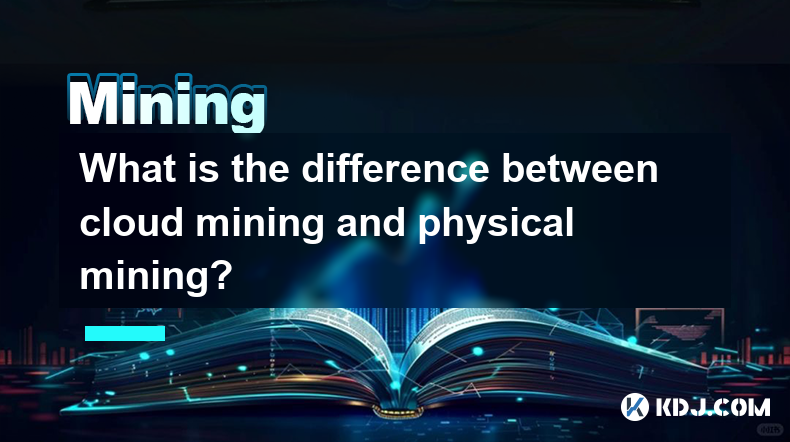
What is the difference between cloud mining and physical mining?
Apr 16,2025 at 01:49am
What is the difference between cloud mining and physical mining? In the world of cryptocurrencies, mining is the process by which new coins are generated and transactions are verified and added to the blockchain. There are two primary methods of mining: cloud mining and physical mining. Understanding the differences between these two approaches can help...
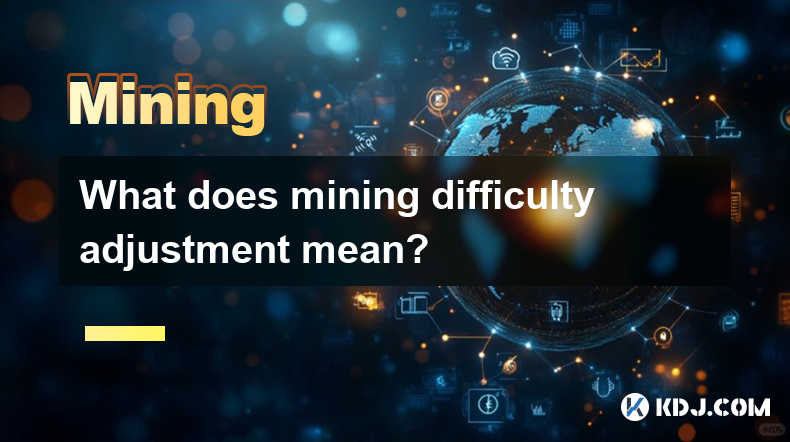
What does mining difficulty adjustment mean?
Apr 16,2025 at 12:42am
What does mining difficulty adjustment mean? Mining difficulty adjustment is a crucial mechanism in blockchain networks, particularly in Proof of Work (PoW) systems like Bitcoin. It ensures that the rate at which new blocks are added to the blockchain remains consistent, despite fluctuations in the total computational power (hash rate) of the network. T...
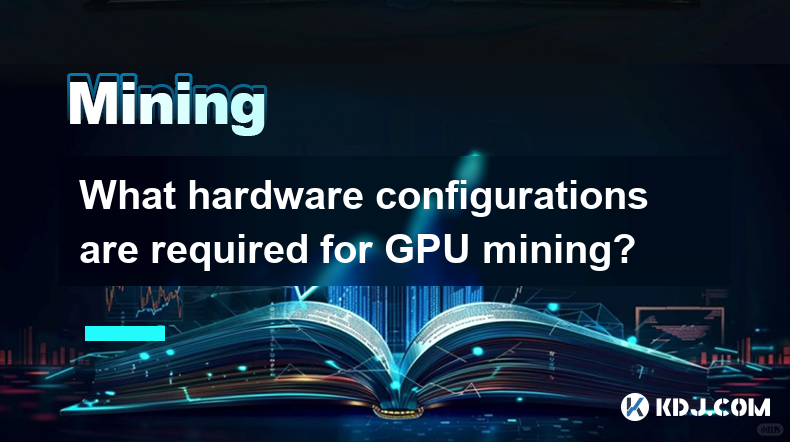
What hardware configurations are required for GPU mining?
Apr 16,2025 at 09:21am
GPU mining has become a popular method for cryptocurrency enthusiasts to mine various cryptocurrencies, such as Ethereum, Ravencoin, and others. To successfully engage in GPU mining, it is essential to understand the hardware configurations required to maximize efficiency and profitability. This article will delve into the specifics of what you need to ...
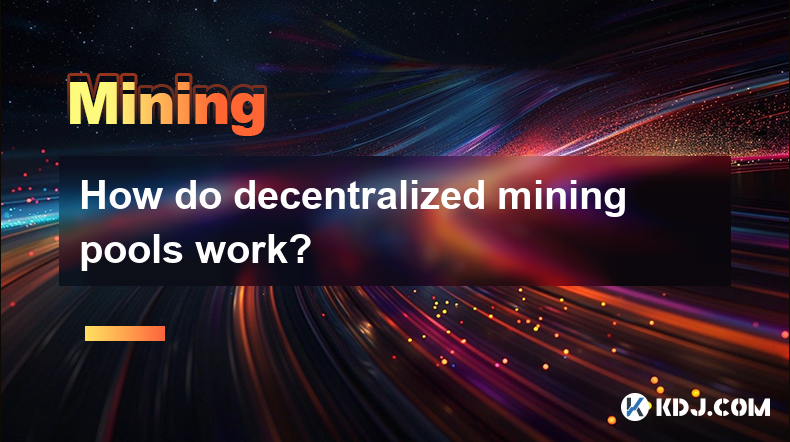
How do decentralized mining pools work?
Apr 16,2025 at 05:42am
Decentralized mining pools represent a significant evolution in the world of cryptocurrency mining, offering a more democratic and transparent approach compared to traditional centralized pools. In this article, we will explore the mechanics of decentralized mining pools, their benefits, and how they operate within the cryptocurrency ecosystem. What are...
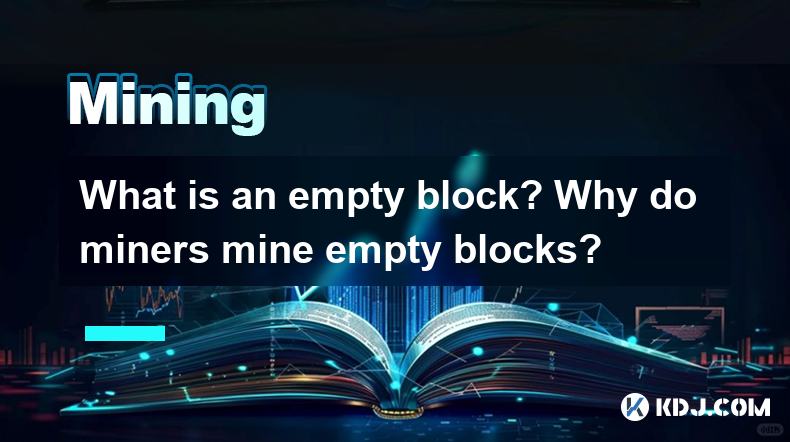
What is an empty block? Why do miners mine empty blocks?
Apr 16,2025 at 01:28am
What is an Empty Block?An empty block in the context of blockchain technology, particularly in cryptocurrencies like Bitcoin, refers to a block that contains no transactions other than the coinbase transaction. The coinbase transaction is a special transaction in which new bitcoins are generated and awarded to the miner who successfully mines the block....

How to reduce the electricity cost of mining?
Apr 16,2025 at 08:42am
Mining cryptocurrencies, particularly Bitcoin, is an energy-intensive process that can lead to significant electricity costs. However, there are several strategies that miners can employ to reduce these expenses and make their operations more cost-effective. In this article, we will explore various methods to minimize the electricity cost of mining. Cho...

What is the difference between cloud mining and physical mining?
Apr 16,2025 at 01:49am
What is the difference between cloud mining and physical mining? In the world of cryptocurrencies, mining is the process by which new coins are generated and transactions are verified and added to the blockchain. There are two primary methods of mining: cloud mining and physical mining. Understanding the differences between these two approaches can help...

What does mining difficulty adjustment mean?
Apr 16,2025 at 12:42am
What does mining difficulty adjustment mean? Mining difficulty adjustment is a crucial mechanism in blockchain networks, particularly in Proof of Work (PoW) systems like Bitcoin. It ensures that the rate at which new blocks are added to the blockchain remains consistent, despite fluctuations in the total computational power (hash rate) of the network. T...

What hardware configurations are required for GPU mining?
Apr 16,2025 at 09:21am
GPU mining has become a popular method for cryptocurrency enthusiasts to mine various cryptocurrencies, such as Ethereum, Ravencoin, and others. To successfully engage in GPU mining, it is essential to understand the hardware configurations required to maximize efficiency and profitability. This article will delve into the specifics of what you need to ...

How do decentralized mining pools work?
Apr 16,2025 at 05:42am
Decentralized mining pools represent a significant evolution in the world of cryptocurrency mining, offering a more democratic and transparent approach compared to traditional centralized pools. In this article, we will explore the mechanics of decentralized mining pools, their benefits, and how they operate within the cryptocurrency ecosystem. What are...

What is an empty block? Why do miners mine empty blocks?
Apr 16,2025 at 01:28am
What is an Empty Block?An empty block in the context of blockchain technology, particularly in cryptocurrencies like Bitcoin, refers to a block that contains no transactions other than the coinbase transaction. The coinbase transaction is a special transaction in which new bitcoins are generated and awarded to the miner who successfully mines the block....
See all articles























































































